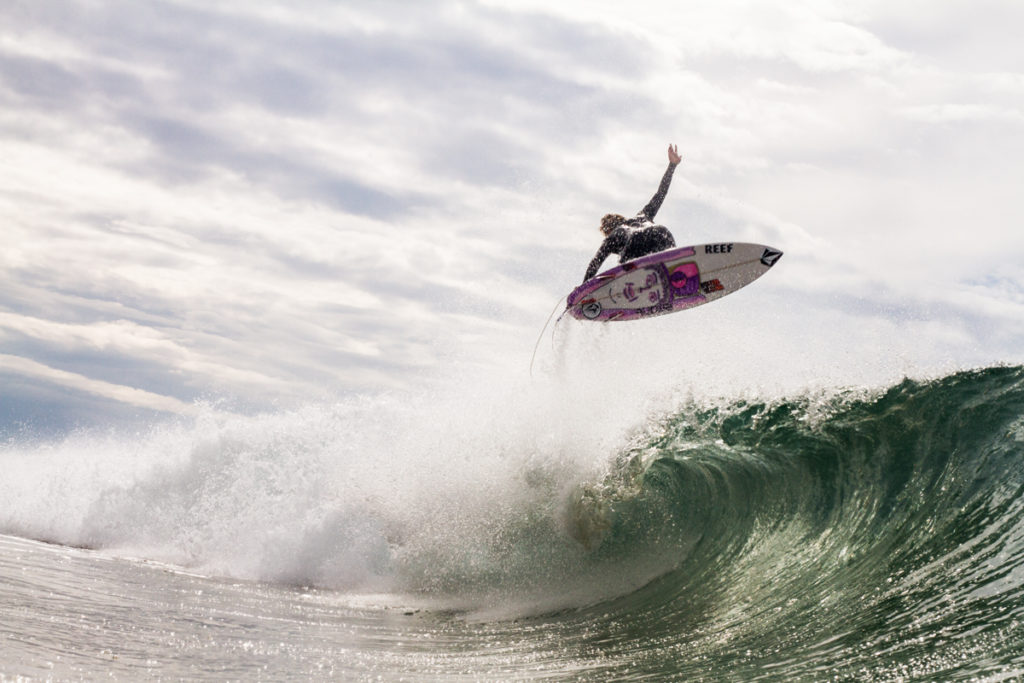Buy Now, Pay Later

Free Surfboard Advice
Customer Service 9am - 5pm (UK)
Trusted by Pyzel

Recognising the perfect wave adds an extra skill level to a surfer’s repertoire, as they decide in an instant which to catch and which to let go. The question is, how do you know what the “ideal wave” looks like?
According to seasoned surfers, the ideal wave will break and peel down the line. The surfer is usually propelled by a breaking wave, and when the swell and shore collide, this is where the speed is delivered. At this point, the surfer can speed down the line, make a turn at the bottom and cut back. When the wave continues all the way to the shore with a clean break, this is the perfect wave for most surfers.
A wave will smooth out if it has offshore wind, as it will reduce chop, enabling a faster, more enjoyable and more comfortable ride. This ideal wind condition often starts and finishes during the early hours of the day.
When you surf at midday, you’re more likely to experience onshore wind and rough waters – conditions that will ruin all hopes of a perfect ride, although some surfing is always better than no surfing!
So, what makes a bad wave? This is when the waves bubble up, fold over and dump a whole wall of water. Always avoid these sections, as you’re more likely to wipe out and even break your surfboard.
Sitting out at the break, looking out to sea, you start to analyse the incoming waves. Check out the horizon, a long way from the shore, looking for any signs of big waves approaching. When you spot a whitewash a few hundred feet away, on the wider walls, you know a set of waves is approaching. You’ll start to count how many waves pass before the big one hits.
The ideal wave is a roller peeling from one side to the other. When you’ve counted two, three, or four waves, you’ll see a wall of water, and if it’s a good wave, you’ll feel intimidated and might start to wonder if you’re in the best position. As the wave gets closer, you’ll take a quick look for any sign of a closeout. This is when a whole wave breaks at once.
When the wave seems diagonal and the swell is at an angle, you can be pretty sure it will peel through the break and across the shoreline, which is perfect.
By rule of thumb, morning surf is generally best, with the offshore wind conditions enabling smooth rides.
Conditions can change quickly and unless you’re an expert at deciphering surf reports forecasting the conditions at your local spot, you might get caught out. Although not every wave has to be perfect to enjoy yourself, by the same token, you don’t want to end up injuring yourself, or breaking your board, because you pick the wrong wave.
According to the RNLI, they’ve had to assist plenty of surfers who have had a bad experience with waves. With an estimated 250,000 surfers going into British waters ever year, the surfing hotspots can be a mass of people and surfboards when the sun is shining and the surf is rolling.
While most surfers understand the risks involved, some tend to push themselves harder in bigger surf and dangerous conditions. Novice surfers who lack experience often can’t manage difficult conditions and if they’re surfing outside the area covered by lifeguards, it can have serious and even fatal consequences. In recent years, there have been eight surfing fatalities off the British coast, between 2011 and 2015.
To minimise risks, try to surf with a friend, especially in a big swell, so you can look out for each other. Before setting out, check the local forecast for tide, winds and swell. Tell someone you’re going surfing and when you’re likely to be back. Know your limits, as it’s only too easy to get caught out if you challenge yourself too early. Be aware of rip currents – find out where they are by speaking to an RNLI lifeguard before you go into the water.
Always wear a leash so you won’t get separated from your board and wear a wetsuit, as it will keep you warm and give you extra protection from impact with other surfboards, or scrapes on rocks. Follow the basic safety advice, as this will help ensure you’re not the next surfing casualty!
© 2024 Ocean Magic – The Factory. All rights reserved. Company Number: 04664716. VAT Registered 807 8508 12

Get 10% off your first order!
Join the Lineup!